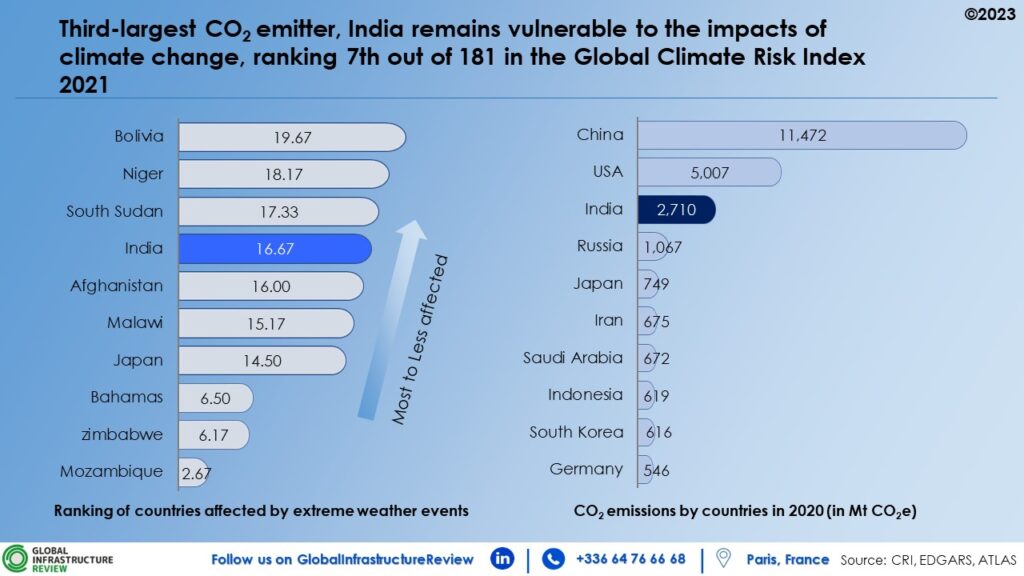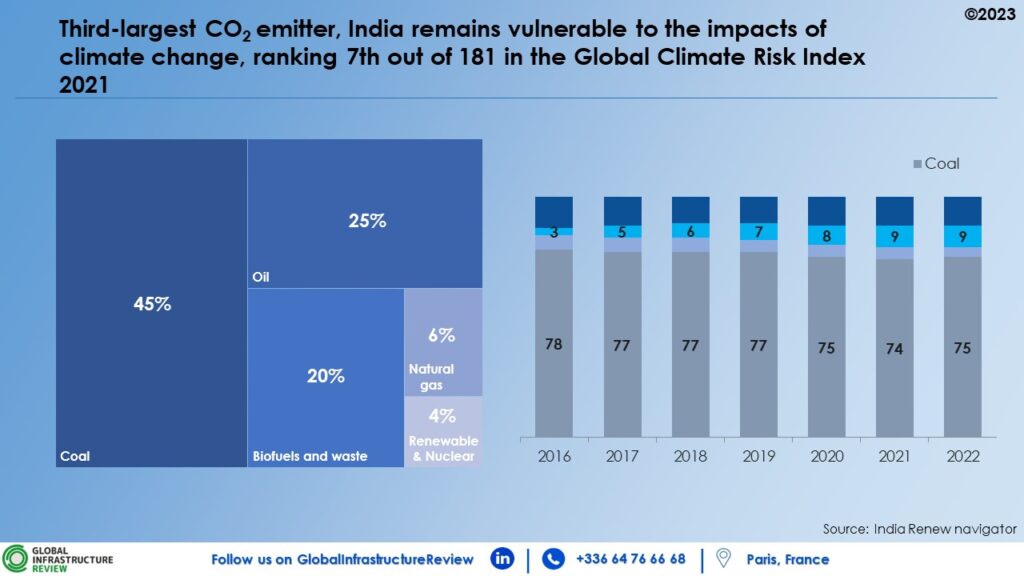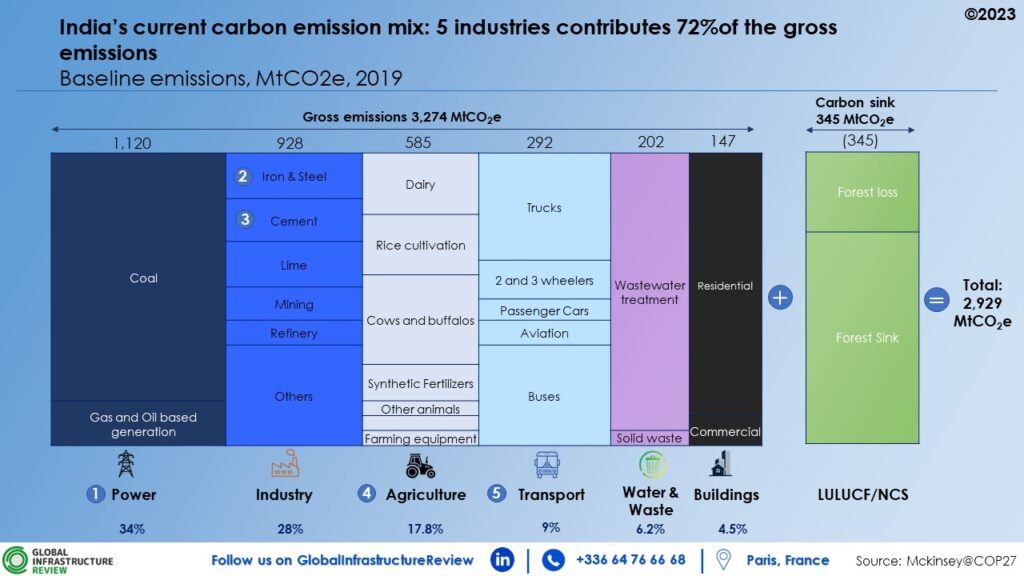India is among the ten countries most affected by extreme weather events, according to the recent Global Climate Risk Index.
More than ¾ of India’s districts (home to 638 million people) are classified as extreme weather sensitive areas. Although the country has low per capita emissions (1.8 tonnes of CO2 per capita), India remains the third largest emitter in the world.

According to Mckinsey, India’s current emissions are about 3.3 million billion tonnes, partly reduced by the sequestration that occurs automatically in Indian forests. But the rest, 2.9 billion tonnes out of 3.3 billion tonnes of CO2, comes mainly from power generation.
Power generation accounts for 34% of the country’s gross CO2 emissions, as India still relies heavily on fossil fuels (especially coal) for its power generation.
In addition, the bulk of these emissions (about 72%) are driven by five industries, namely power, cement, agriculture, transport and steel. In the transport sector, a large part of the 292 million tonnes of CO2 emitted comes from surface transport and the fuel used in cars.
However, it is worth noting that in 2021, India announced its ambition to achieve net zero emissions by 2070, an important step in the fight against climate change. To achieve these goals, India will need to take urgent action in this decade, so that the country can invest properly in the next two decades (2030 and 2040 decades) to move towards decarbonization.

There are several reasons why this path to decarbonisation is possible according to a recent report by Mckinsey&company.
More than ¾ of India’s 2050 (over 80% of India’s 2070) is yet to be built. The development of robust infrastructure in India will multiply the demand in several sectors.
By 2070, India will consume 8 times more electricity than today, with electricity generation projected at over 9000 TWh, leaving room for large-scale, non-fossil fuel energy development.

Demand in agriculture is expected to double, but increased mechanization will improve agricultural productivity while using less land, ensuring that there is enough land left to use for decarbonization.
Demand for steel will also increase by a factor of 8 due to the expansion of urbanization. Appropriate policies, with the rapid imposition of a carbon price, will make green steel built on the low-carbon hydrogen route competitive.

The outlook for decarbonising India is positive. While this will create new opportunities, it will also require major investments.